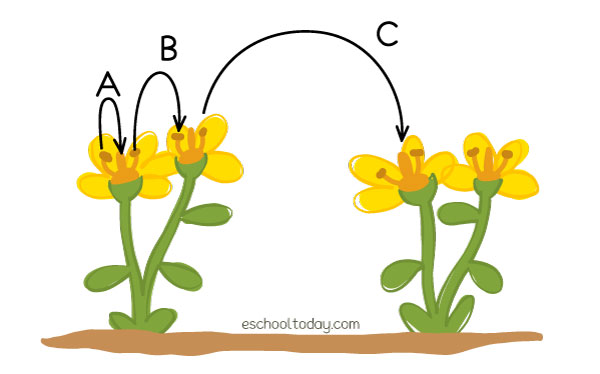- Pollination
Self-pollination and cross-pollination
In the flower illustrations on the previous page, you notice that both anther and stigma are found in the flower. Does that mean that the pollen (male cell) will fall onto the stigma of the same flower and fertilize it?
Yes and no: and this can be explained in Self-Pollination and Cross-Pollination
Self-Pollination
Look at points A and B in the illustration below:
This is when pollen from the stamen of a flower is transferred to the stigma of the same flower, or the stigma of another flower from the same plant.
Some plants have male and female parts on different flowers. Others have male and female parts on the same flower. Self-pollination does not result in genetic variation, and therefore the seed from this process is usually not viable or of quality. In some cases, the plant’s biochemical makeup can recognize pollen grains from its flower and abort the process in the event of self-pollination. The scientific name for this is self-incompatibility.

Cross-Pollination
Look at point C in the illustration above:
This is when pollen from one plant is transferred to the stigma of another plant (of the same species). This ensures genetic variety and seeds that result are usually of high quality.
Although possible, it is rare that pollen from one flower—say a coneflower, will fertilize a completely different flower such as a geranium. Sometimes cross-pollination is possible among different plants of the same family.
